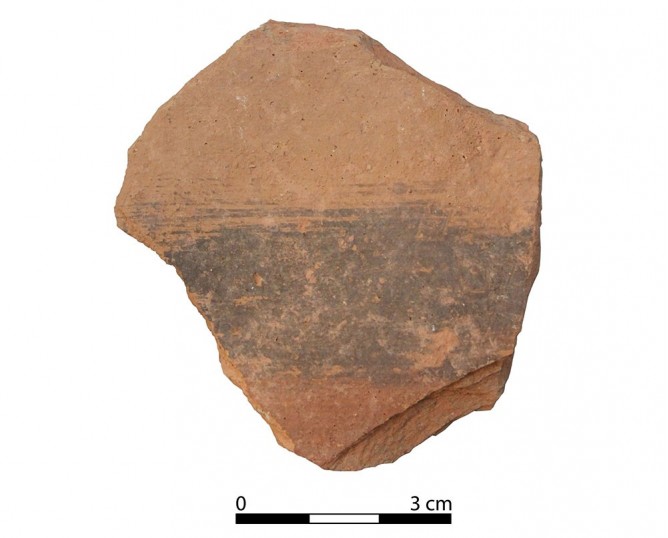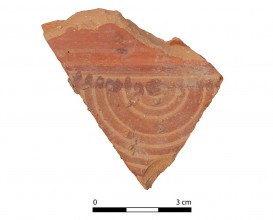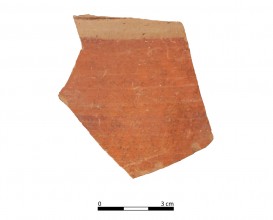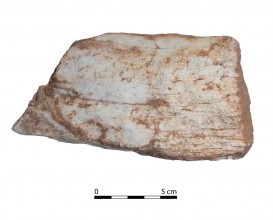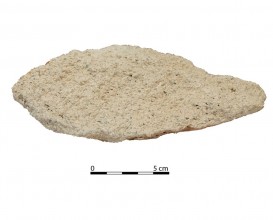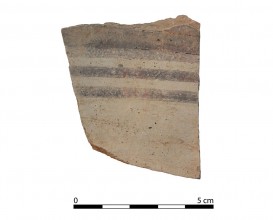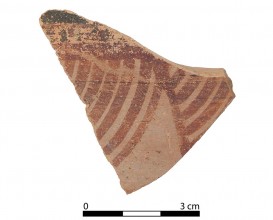Ceramic vessel CC10. Oppidum Cerro de las Cabezas
The black color is manufactured using a oxide of manganese identified by MRS as bixbyite/hausmannite (Mn2O3/Mn3O4) and jacobsite (MnFeO4) and verified by the EDXRF analysis: 5.89% wt of Mn versus 0.05% wt of Mn in the ceramic paste. Bixbyite/hausmannite are the result of the transformation of pyrolusite when firing temperature is set above 450ºC and below 900ºC. The presence of jacobsite means a temperature reaching the 900ºC.
Dimensions
: 5 Centimeters
: 6 Centimeters
Materials
pottery
Temporal
: Iberians, Iberian
: 6th ct. BC-5th ct. BC
Spatial
: Oppidum Cerro de las Cabezas
: Valdepeñas, Ciudad Real, Spain
: WGS84
Copyrights
Creative Commons - Attribution, Non-Commercial, No Derivatives (BY-NC-ND)
References
Esteban, G. (2000): “Una característica producción cerámica pintada del Período Ibérico pleno en el sur de la Meseta”. Cuadernos de Prehistoria y Arqueología de la Universidad Autónoma de Madrid, 26: 69-84.
Digital Resources
-
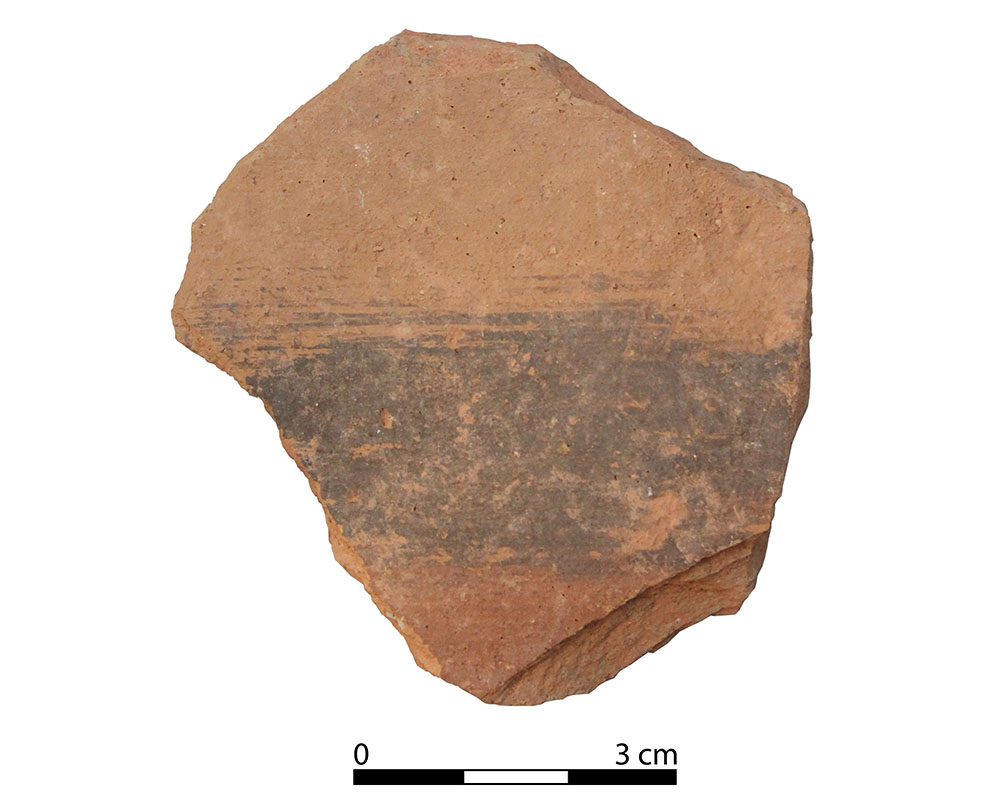
Creative Commons - Attribution, Non-Commercial, No Derivatives (BY-NC-ND)
Arquiberlab
http://creativecommons.org/licenses/by-nc-nd/3.0/ -

Creative Commons - Attribution, Non-Commercial, No Derivatives (BY-NC-ND)
Arquiberlab
http://creativecommons.org/licenses/by-nc-nd/3.0/ -
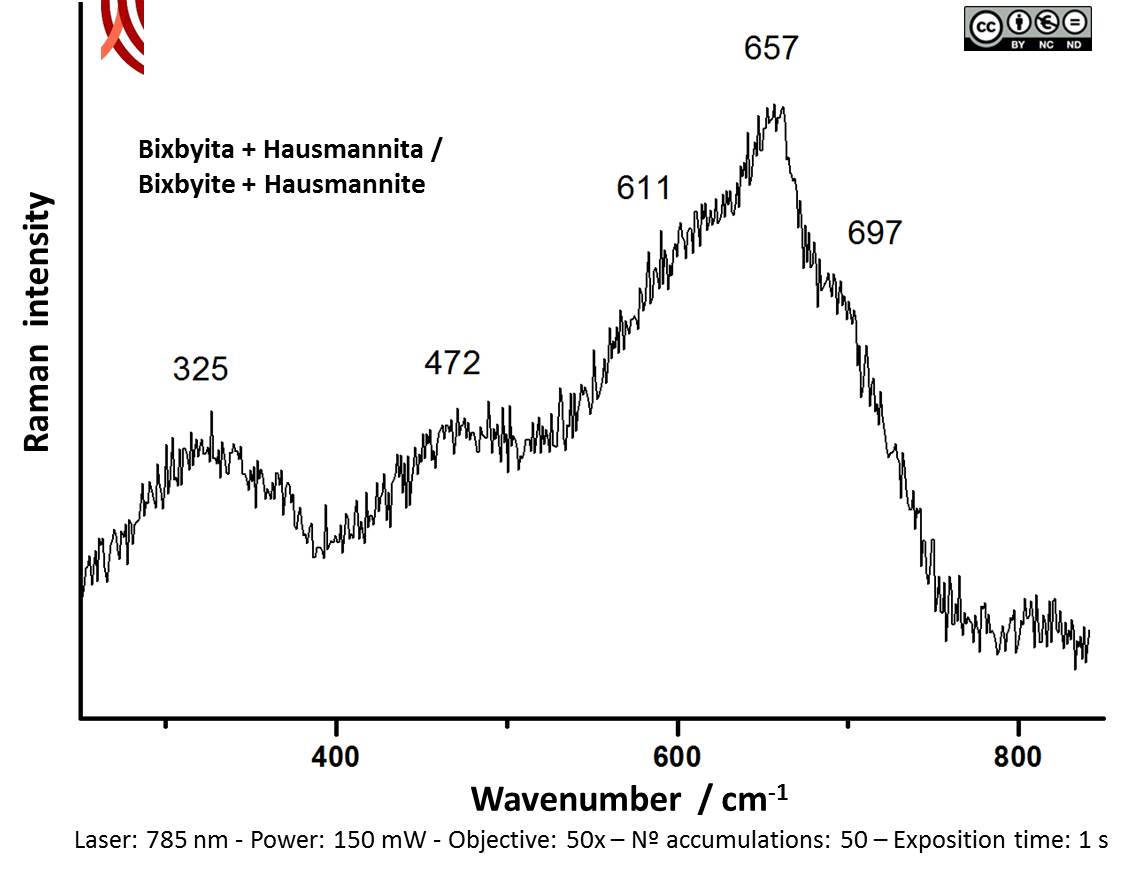
Creative Commons - Attribution, Non-Commercial, No Derivatives (BY-NC-ND)
Arquiberlab
http://creativecommons.org/licenses/by-nc-nd/3.0/ -

Creative Commons - Attribution, Non-Commercial, No Derivatives (BY-NC-ND)
Arquiberlab
http://creativecommons.org/licenses/by-nc-nd/3.0/ -
Creative Commons - Attribution, Non-Commercial, No Derivatives (BY-NC-ND)
Arquiberlab
http://creativecommons.org/licenses/by-nc-nd/3.0/ -
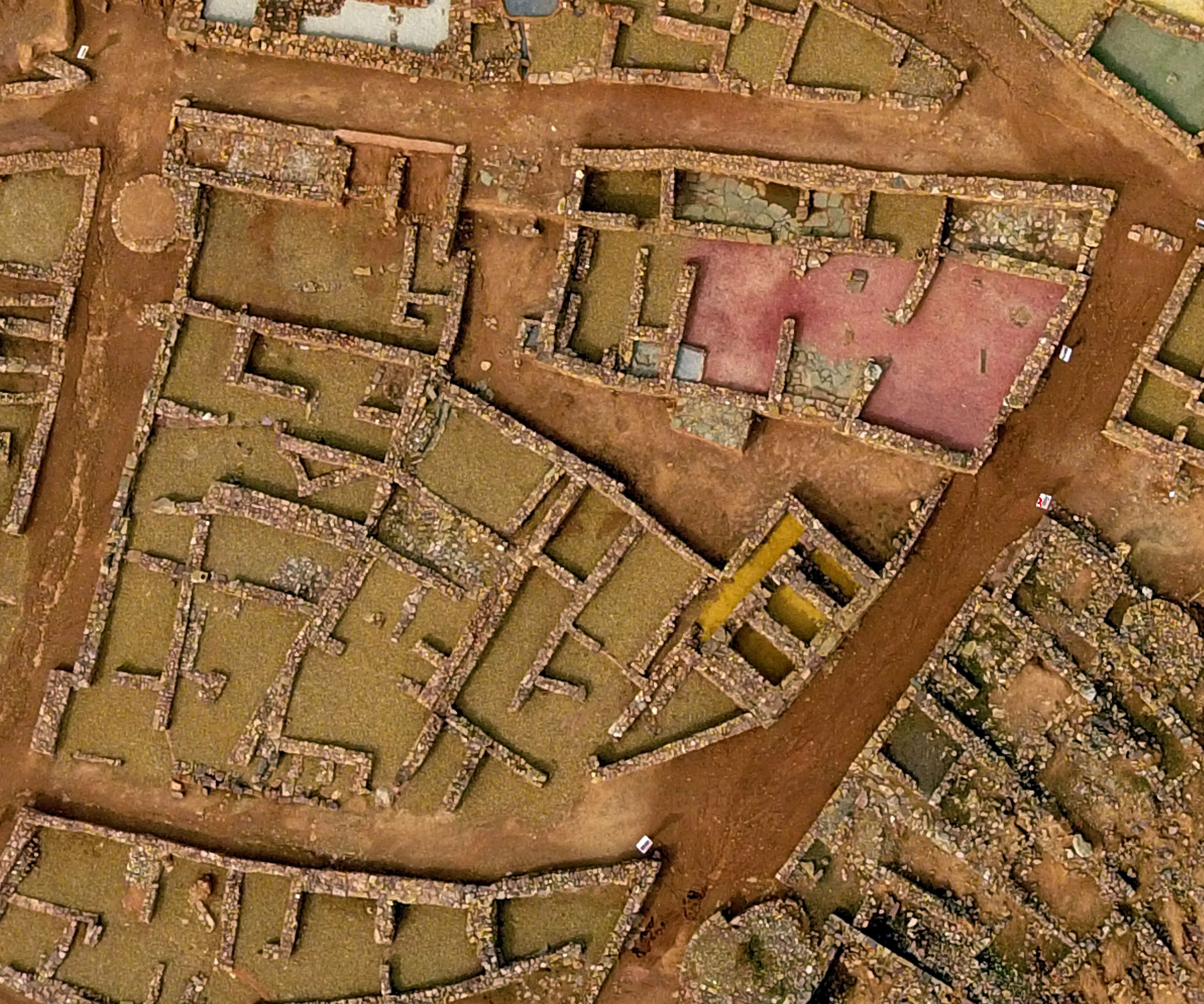
Creative Commons - Attribution, Non-Commercial, No Derivatives (BY-NC-ND)
Arquiberlab
http://creativecommons.org/licenses/by-nc-nd/3.0/
Activities
Archaeometric analysis Physical-chemical analysis Ceramic. Analysis of the red and black decoration |
Raman Microscopy Mineral analysis of the black decoration Non destructive. Surface cleaning. Sample pretreatment is not required. Direct measurement. Micro-Raman Spectroscopy (MRS) Renishaw ‘in via’ Reflex Spectrometer coupled with a confocal Leica DM LM microscope (CICT, University of Jaén), equipped with a diode laser (785 nm, 300 mW), and a Peltier-cooled CCD detector, calibrated to the 520.5 cm-1 line of silicon. |
X-Ray Fluorescence Elemental analysis of the red and black decoration Non destructive. Surface cleaning. Sample pretreatment is not required. Direct measurement. Energy dispersive X- ray fluorescence (EDXRF) Espectrómetro de fluorescencia de rayos X de energía dispersiva EDAX (modelo Eagle III)( CITI, Universidad de Sevilla). Está equipado con un tubo de rayos X microfocus con un ánodo de Rh, una lente policapilar para enfoque de rayos X y un detector de energía dispersiva Si-(Li) de 80mm2. La cámara de medida incorpora una bandeja motorizada para el posicionamiento de la muestra. Microscopio de alta resolución para posicionar la muestra a la distancia adecuada. Cámara con bomba de vacío para elementos de bajo número atómico (Z). Para un tamaño del área de medida de 300 μm se selecciona en el tubo de rayos X un voltaje de 40kV. La intensidad de corriente del tubo se adapta a cada muestra para optimizar la detección de los rayos X. |

